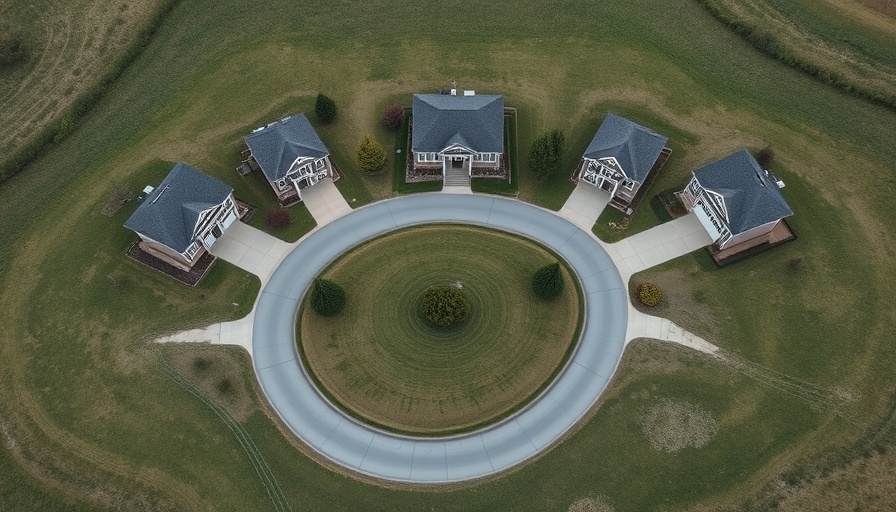
Understanding the Rise of Multi-Generational Households
With the rising cost of living across the United States, a notable shift towards multi-generational living is emerging. Recent studies indicate that nearly one in five Americans now share their homes with family members spanning multiple generations. This setup is more than just a trend; it signifies a societal change where close-knit family units prioritize shared resources and support.
The Concept of Family Compounds
What exactly is a family compound? This term refers to a living arrangement in which multiple generations reside together on a shared property. The configuration typically includes separate, yet interconnected dwellings designed to promote both independence and family bonding. You'll often find family compounds organized as a main house complemented by accessory dwelling units (ADUs), or as several homes resting on a larger plot of land.
Creating a Legacy Through Thoughtful Planning
Building a family compound is an opportunity to craft not just a home, but a legacy. According to Bradford Custom Model Homes, effective designs should blend private living spaces with communal areas. This balance is essential for fostering connections while ensuring individuals also have their own retreats. Designs that include amenities like larger courtyards, dining pavilions, and sports courts enable family members to come together freely while ensuring every person has a valued space of their own.
Adaptive Layouts for Long-Term Harmony
Successful family compounds rely significantly on adaptable living spaces. Designers recommend features such as flexible guest suites that can evolve into caregiver accommodations, and wings that allow private access to outdoor areas. With a goal of crafting homes that adapt to changing family dynamics, soundproofing between living areas, and smart home technology can enhance the communal living experience.
Emotional and Practical Benefits of Multi-Generational Living
Aside from the practicalities, the emotional benefits of multi-generational living are considerable. Families not only share resources but also provide support systems that nurture family bonds and shared traditions. Creating a family compound allows for the cultivation of memories in shared spaces, while different generations can learn from each other’s life experiences. It’s about much more than just cohabitation; it's about collaborative living, where both young and old contribute to and benefit from the same home.
Current Real Estate Trends Favoring Multi-Generational Living
The trend towards multi-generational living is reflected in the current real estate market, particularly as families seek out properties that can accommodate more than one household. Real estate websites like Zillow and Trulia now feature a range of listings that cater specifically to this rising demand, be it in the form of larger homes or properties with the potential for multi-unit configurations. Additionally, investment opportunities in commercial real estate can also include family-centric developments that promote communal living.
Future Insights: The Outlook for Family Compounds
Looking ahead, the allure of family compounds is likely to continue growing. With economic pressures persisting, more families may embrace the benefits of living close together while maintaining their independence. Future real estate developments may increasingly focus on designs and locations specifically catering to this type of living, promoting the viability of family compounds as a smart investment for new homebuyers.
 Add Row
Add Row  Add
Add 



Write A Comment